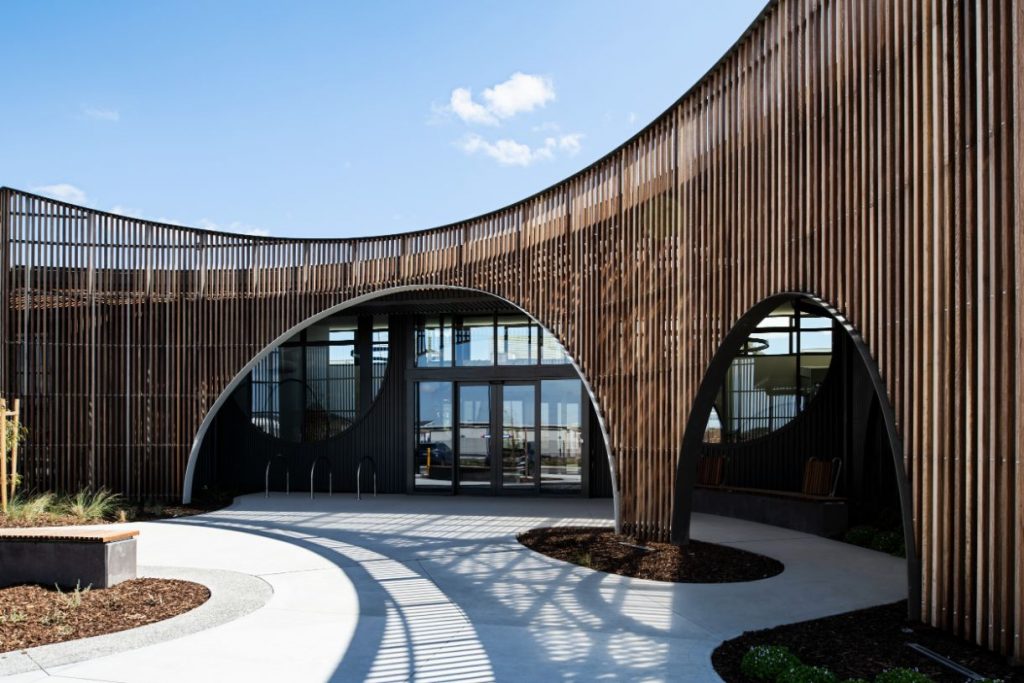
Rix Road early learning centre encourages childhood wonder through nature
Rix Road early learning centre encourages childhood wonder through nature
Share
Cohen Leigh has recently completed Rix Road, an early learning centre whose design language allows architecture to generate childhood exploration and experimentation
Cohen Leigh was established in 1987, and since then has developed a preference for taking on educational and civic projects with gusto. Over the past 10 years, the firm narrowed its attention towards predominantly public projects.
The firm is guided by a goal of designing projects anchored in the belief that spaces play an instrumental role in bringing people together.
Rix Road is a 1350-square-metre facility located on a greenfield site in the soon-to-be-developed satellite city, Officer. The facility contains four interconnecting program and community room spaces with five consultation rooms and staff planning spaces.

The early learning centre also features maternal and child health services, family services, supported playgroups, counselling services and community meeting spaces.
Lead architect Ben Cohen says a key motivation of the design was to achieve flexible and diverse learning environments through allocating a different theme to each room. Activity rooms also needed to possess the flexibility to be adapted into one large community space.
“The planning of the spaces was driven from the inside out – we positioned program rooms side by side with the flexibility to ‘open’ as one larger community room space if needed,” explains Cohen.
The Sandringham-based firm intends for Rix Road to exude a calming aura through architectural gestures that encourage interconnectivity with nature.
The site capitalises on the properties of sunlight to enable engagement with nature through a high-level clerestory that ensures spaces are light-filled and naturally ventilated.
Additionally, courtyards littered throughout provide children and staff with opportunities to constantly engage with the natural landscape.
Rix Road project architect Clementine Leigh says the courtyards and absence of dead-end vistas speak to the project’s desire to establish constantly accessible focal points to the surrounding nature.
“We wanted to make sure there was always a visual connection to a garden,” says Leigh.
The site’s features also allow for an environment suitable to learning and productivity yet also playtime, through the naturalistic setting and tactile elements encouraging sensory and cognitive development, balance and motor skills.
Leigh says a calming and tranquil learning and play environment for children is achieved through a neutral and soft colour palette.
This design choice was also sympathetic towards children with learning difficulties, so as not to risk overstimulation and sensory overload.
The firm employed architectural gestures such as curves, archways and portholes to further achieve a peaceful and inspiring learning space and ‘embed the centre into a child’s imagination’.
“Portholes provide moments of intrigue and exploration for children,” Cohen said.
The arches evoke parallels to a castle structure, paving the way for children to enjoy creative experimentation and playtime in an almost fairytale environment.
“It was important to us that the architecture engaged with the children who would use the spaces – we wanted something memorable that would stick in the head of a child and be a point of difference from their home,” says Ben.
Cohen Leigh also prides itself on Rix Road’s steadfast commitment to sustainability, as features such as passive solar design, solar collection, automated ventilation, low-energy lighting and rainwater recycling are incorporated into the site.
The project was not immune to challenges and difficulties, particularly as the timber screen at the south of the building required 3D modelling and prototyping on a small and finicky scale to refine detailing requirements.
“The steel members bending in two directions made the design process quite complex and we needed multiple cranes to connect the sections of the steel screen during the installation,” says Ben.
Leigh also addresses the difficulties of building in a suburb that does not officially exist – a lack of community made it challenging to predict how people would respond to the site.
“On our first site visit, there was merely a paddock, and then six months later there were roads and houses – we didn’t have a lot of site context to work with,” adds Leigh.
Despite these challenges, Cohen Leigh’s design of Rix Road celebrates the multi-faceted experience of early learning, wherein playtime and exploration serve equal importance alongside cognitive development.
Photography by Tom Blachford.
If you’re keen to read more about recent educational projects, check out Billard Leece Partnership with Port Melbourne Secondary School
















